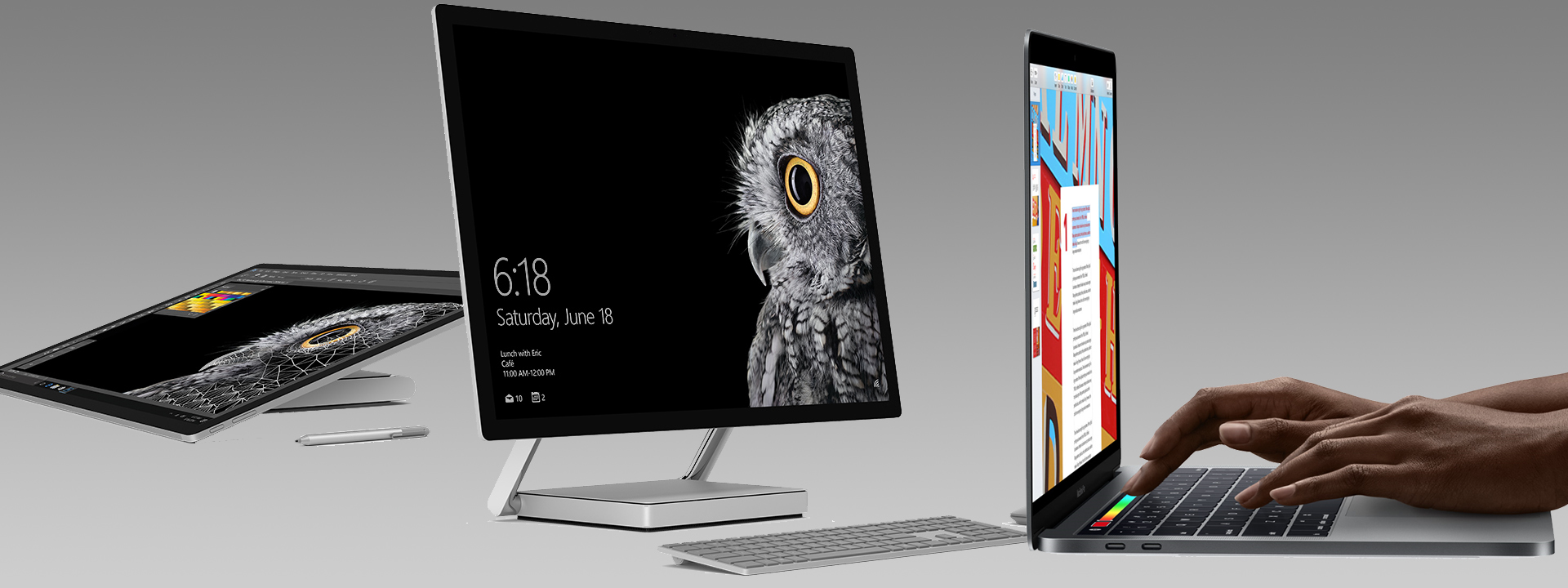
Microsoft and Apple: Two Paths Diverged
posted Sunday Oct 30, 2016 by Scott Ertz

This week, Microsoft and Apple, two of the big three in the technology industry, held announcement events to show off their vision for the future of computing. While many seem to have taken away the idea that both of these companies are innovating in the space, what most seem to have missed is how both companies have taken incredibly different paths. While the hardware from both companies is aimed primarily at creators, both see different ways that those creators will want to use their computers.
Microsoft
Microsoft's approach to creators is centered around two theories: immersion and collaboration, and every aspect of their presentation was focused on these two aspects. The next major update to Windows 10, codenamed Redstone 2, was announced to be titled the Creators Update. This update will bring with it a myriad of collaboration features, with a lot of them focused on bringing 3D technology to the masses.
Paint has been updated to include 3D capabilities, 3D scanning technology is available to turn physical objects into digital ones, and an online community has been created to share those objects. Those objects can come from 3D Builder, Paint 3D, Minecraft and more, and can be used in everything from Word and PowerPoint to 3D printers, now allowing you to print items created in Minecraft.
The most exciting place where these objects can be used is in Augmented and Virtual Reality environments. As has become normal, Microsoft brought out a HoloLens, and showed off the idea of taking a 3D object, scanned in real life, altered in Paint 3D, and placing it on a table in holographic reality. They then announced Windows Holographic-powered virtual reality headsets from manufacturers ranging from Acer to HP.
The company then showed off an updated version of the Surface Book, with more battery life, more processing power, and, more importantly, a better video card. As with the other higher-end Surface Books, it has an additional graphics card for when the screen is docked, making things like video and photo editing easier.
Then came the real reveal: the Surface Studio. This computer is a highly-styled all-in-one that both looks amazing and has amazing specs. The world's thinnest and highest quality LCD screen ever produced, at a resolution of 4500x3000 at 28 inches, and a hinge that allows it to move from 90 degree upright to 20 degree drafter's board are the focal point. It, of course, has PixelSense technology, the original foundation for the Surface family, meaning multi-touch input, making the computer ideal for artists.
The screen also allows for external inputs, namely the Surface Pen. Again, this is a huge bonus for artists, placing the Surface Studio in direct competition with the Wacom Cintiq. Where the Studio completely sets itself apart from others is the new Surface Dial. Similar to a jog/shuttle, used by video editors, the Dial sits anywhere on the screen and allows for a wide arrange of adjustments. The chiefest among them is the ability to adjust colors on the fly, allowing for painting capabilities not even available in reality.
All of these things are designed specifically to draw the artist into the experience. Whether the 28-inch, multi-touch display with Dial, or the AR and VR headset, all aspects of the Creators vision from Microsoft are about making the artist feel closer to their work. Even as Panos Panay demonstrated the Studio, he couldn't help but lean onto the computer, making it look more like an artist's table than a computer.
Apple
Apple did not have nearly as much to show off as Microsoft. It was an event almost entirely focused on the must-needed upgrade to the MacBook Pro line. A line that often feels like a forgotten part of the company was last updated about 18 months ago, and that update was fairly minor. This year's change was less subtle and also focused on creators.
Rather than going for a full touchscreen, something that Apple has always made clear was not needed on a computer, they removed the function keys from the keyboard. The explanation for this change was because the function keys have existed for several decades, though the keyboard has existed longer than the computer itself. In its place, they have added a second screen, this one being full-touch.
Similar to what Razer did with their Switchblade interface, the screen is customizable depending on context. For the Touch Bar, Apple's name for the concept, Photoshop will show zoom and crop tools, while Word may show formatting controls, and iMessage might show emojis. This change is a modernization of the old WordPerfect keyboard covers that gave context to the function keys themselves.
Apple's approach is to maintain a razor thin context on the keyboard itself, keeping you back away from the computer. This will keep the artist in more of a perspective view, rather than an immersive view. Since the hardware lacks tactile feedback, like you would get with physical keys, it will force you to look at the smaller screen to make decisions.
The Differences
Microsoft's approach is designed to draw the artist into the experience. The Pen and Dial work together to keep your eyes on the screen and your attention on your work. Apple's approach is to maintain full perspective. The Touch Bar and mouse work separately to produce different, unrelated results. Both companies have created and explained their paths, now it is up to the creators themselves to decide which is right for them.
Are you a creator? Which path makes the most sense to you? Let us know in the comments.

